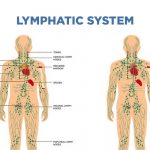Drop Foot – Overview and Treatment Options

Drop foot or foot drop is a condition characterized by the inability to lift the front part of the foot. Drop foot usually affects only one foot but it’s not uncommon for both feet to be affected.
Caused by the weakness of the ankle and toe muscles, this condition causes one to drag their toes along the ground while walking, symptom often referred to as “steppage gait”. To avoid dragging their toes, patients often exaggerate the flexion of the hip and knee joints, or swing their leg in a wider than normal arc.
Their gait therefore mimics the movements done when climbing stairs, and sometimes the patients slap their foot down onto the floor with each step. As a result, the skin on the toes and top of the foot may become harder and may feel numb in time.
Although it’s not considered a disease in itself, foot drop can be a sign of an underlying neurological or muscular problem. Sometimes this symptom is temporary, but in a lot of patients it’s a permanent problem that requires medical treatment. Drop foot can be associated with conditions like diabetes or stroke, with peripheral nerve injuries or neuropathies, but can also be the result of drug toxicities, and in some patients the causes may overlap.
There’s no typical age for this condition to occur, so anyone can be affected. If the symptom is caused by nerve injuries, it’s usually the peroneal nerve that is damaged. This nerve is a branch of the sciatic nerve, which is located close to the skin’s surface and wraps from the back of the knee to the front of the shin. Injuries caused to this nerve can result in drop foot and numbness or pain along the shin.
Sports injuries are the most frequent cause for peroneal nerve damage, but diabetes and knee or hip replacement surgery can also result in damage to this nerve. Less often, spending long hours sitting cross-legged, or doing squats with or without weights, or even giving birth can result in peroneal nerve damage. Prolonged kneeling and wearing a plaster cast that encloses the ankle and ends below the knee can also cause injuries to this nerve.
Another possible cause for foot drop is muscle disorders or nerve disorders. Muscular dystrophies and other conditions that cause muscle weakness can contribute to drop foot. Conditions like muscular dystrophy, ALS or Lou Gehrig’s disease, or polio, can lead to progressive muscle weakness and drop foot. Also, brain and spinal cord disorders like multiple sclerosis, cerebral palsy or stroke may cause foot drop.
In what concerns the treatment, the recommendations depend on the severity and cause of the symptom. If the drop foot is caused by a problem with the nerve, nerve stimulation may be recommended, but one may also be advised to wear braces or splints that fit into the shoe, to help hold the foot in a normal position.
The wear of lightweight braces is the most common treatment for foot drop, and physical therapy is also recommended for improving the muscle strength and control, as well as the patient’s ability to walk. Stretching exercises are very useful for preventing the stiffness of the muscles that control the heels, and exercises for mobility are important for helping maintain a normal range of motion in the knees and ankles.
If the issues are caused by a compressed or damaged nerve, surgery may also be needed. In patients with severely injured nerve, where the foot drop is permanent, surgical intervention may be recommended for transferring a tendon from a stronger muscle or for fusing the foot and ankle joint, so as to improve gait and stability.
The outcomes depend on the cause of foot drop; if the cause can be treated, the symptoms will improve and may even disappear completely, but if the underlying cause cannot be treated, then the foot drop may be permanent and the patient may require permanent braces and physiotherapy.
Have something to add to this article? Comment below or join our Facebook community and share your thoughts with us!







